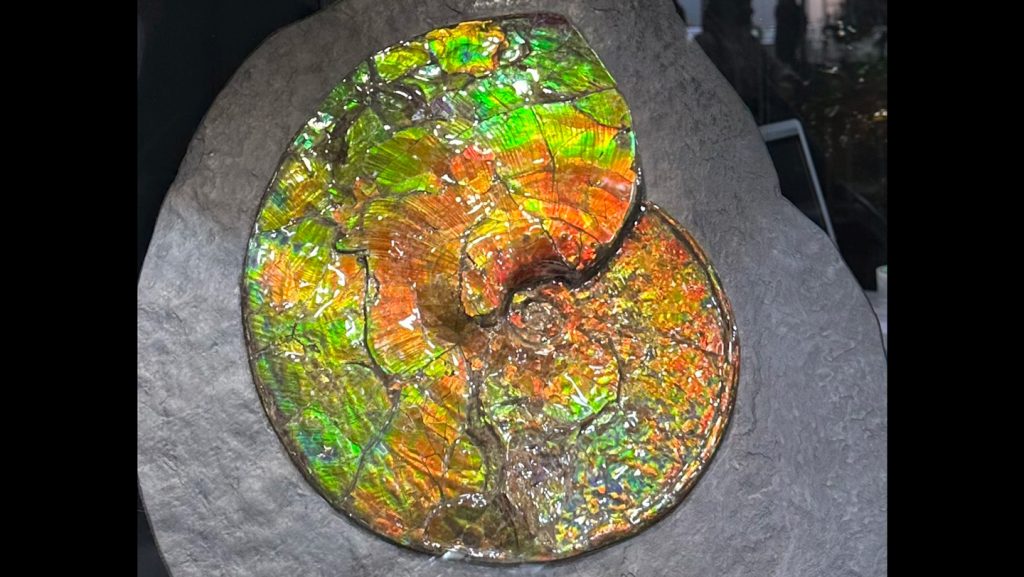The Rainbow Mystery of Ammolite Gems Finally Solved
While authorities may still be searching for the jewels taken in the recent Louvre heist, scientists have successfully solved a different gemstone mystery: the origin of the mesmerizing rainbow shimmer that makes ammolite gems so highly prized and rare.
Ammolite gems come from the fossilized shells of extinct ammonites, ancient squid-like creatures that inhabited Earth’s oceans millions of years ago. Scientists have long known that the secret to these fossils’ spectacular colors must lie within their nacre layers (mother-of-pearl), but the exact mechanism has remained elusive. What’s particularly intriguing is that not all ammonite fossils display this brilliant coloration – nor do other nacre-containing shells like those of nautilus or abalone, despite having similar structures.
The breakthrough came when materials scientist Hiroaki Imai from Keio University in Yokohama, Japan, became fascinated by ammolite after encountering it at a mineral fair in Tokyo. Initially believing the gems might have some special artificial coating, Imai was astonished to learn that the vivid colors were intrinsic to the fossil itself. This sparked his curiosity to investigate further, leading to a comprehensive study published on October 30 in Scientific Reports that finally explains the physical basis for ammolite’s rainbow appearance.
Using advanced electron microscopy, Imai and his research team examined ammolite specimens from the 75-million-year-old Bearpaw Formation in Alberta, Canada. Their findings revealed a remarkable relationship between the thickness of aragonite crystal plates in the nacre and the colors produced. Thinner plates reflected shorter wavelengths of light, creating deep blues, while thicker plates reflected longer wavelengths, producing rich reds. However, thickness alone wasn’t the complete answer – the spacing between these plates proved equally crucial.
The researchers discovered that what makes ammolite truly special is the precise 4-nanometer gaps between its aragonite plates. These microscopic air pockets, created when organic materials that originally filled these spaces decomposed during fossilization, create the perfect conditions for spectacular light reflection. By contrast, abalone shells retain 11-nanometer-thick layers of organic material between their aragonite plates, while in duller ammonite fossils from Madagascar, the plates had collapsed together, eliminating the gaps entirely. Computer simulations confirmed that 4-nanometer spacing represents the ideal “sweet spot” for producing vivid, distinct colors – narrower gaps don’t reflect enough light, while wider gaps scatter too many wavelengths, muddying the color.
These findings suggest that which ammonite fossils develop into colorful ammolite depends on both the species of the original ammonite and the specific conditions under which it fossilized over millions of years. The research team isn’t stopping with ammolite – they’re now turning their attention to opals, another gemstone known for structural colors, to see if similar principles apply. As Imai notes, understanding these natural optical phenomena could potentially inspire new approaches to creating structural colors in manufactured materials, opening exciting possibilities for future applications in areas ranging from fashion to security features in currency and documents.















